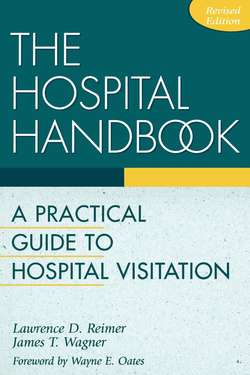Читать книгу Hospital Handbook - James T. Wagner - Страница 10
На сайте Литреса книга снята с продажи.
A Revolution You Ought to Know About
ОглавлениеHospitals are experiencing radical changes, some occurring even as you read this book. This revolution is of interest to pastors, lay-persons, and the Church for several reasons. A significant portion of your ministry is carried out in relationship to illness events. Understanding the nature and structure of hospitals can aid you toward working effectively within that system. Second, you and your parishioners utilize health care facilities as patients and being aware will assist you toward becoming an informed consumer. Third, it may be that some of these changes call for the Church to become more active, at least educationally, in the health care endeavor.
At the heart of this revolution are two central questions. Is health care a right to be afforded to all persons or is it available to the privileged only? Privileged usually means that you and/or a third party (insurance) will pay the bills. The second question is: Who is going to pay for the services? In our society the prevailing political answer1 to the first question is that Americans should have unlimited access to the best available health services. In order to provide the service, however, health care costs currently consume 10.7% of the gross national product.
This wasn't such a problem as long as the family doctor got in his car and drove to your home when you were ill. S/he usually had everything required for treatment in a black bag, predictably a tongue depressant, a stethoscope to listen to heart and lungs, a light to look in the ears or eyes, and, finally, a penicillin shot. As technology developed, however, a clustering of services resulted. Physicians preferred to locate offices near hospitals, which became the centers for the treatment of illness. You now go to the physician's office for care and, if necessary, can be admitted to the nearby hospital, reducing travel time between office and hospital for the doctor.
It has been theorized that when physician house calls became uncommon,2 the sanctity of the physician-relationship changed forever. In its place emerged a less personal, more technological approach which can save lives, but also can prolong life unnecessarily, always at a high cost. There is the resulting need continuously to refurbish and replace outdated hospital facilities and to have the latest piece of new technology. Physicians’ salaries have skyrocketed, yet patient-physician relationships have grown even more impersonal, which contributes to a litigious climate. This climate results in higher malpractice insurance premiums, the ordering of more tests for defensive purposes, and higher costs for the patient. The spiral of increasing costs has been staggering. Controlling these costs and preserving the availability of health care has become a national concern.
